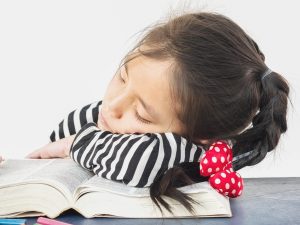
When we talk about Singapore’s education system, many would associate it with stress and students having to mug all year long.
In our typical classroom setting, students have to learn the theories and concepts during their lessons, then get tested on their understanding through tests and exams. It is a pretty straightforward yet repetitive process.
Is this school system limiting the creativity of our younger generation?
Let’s first examine the existing issues in our schools.
Our exam format

The most prominent sign of our education system is our exam formats — the way we are testing our students: question, answer, then awarding marks according to the answer key.
Teachers refer closely to fixed answer keys as guidelines to the correct points, and students have to hit the correct keywords or answers in order to attain their marks.
To prepare themselves for these exams, students would of course drill on practice worksheets that stimulate the actual exam formats, so that they would know what to expect and perfect themselves.
This school system entails a very repetitive process that involves constant practice and memorisation, with not much room for true exploration and critical thinking in the subject.
Large class sizes
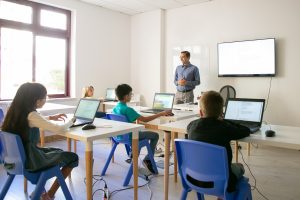
Especially in our little red dot, we have limited resources such as teachers and space, which is why our class sizes in schools have to be pretty big.
According to the Ministry of Education (MOE), “form class sizes have generally remained above 30 across the levels” and “MOE provides schools with resources based on student and programme needs”.
To cater for as many students as possible, teachers have to use a one-size-fits-all, common approach in teaching, leaving them with not much of a choice even if some students may have different learning needs.
Students are constrained to the mainstream teaching and learning method.
Students have to show certain accepted workings
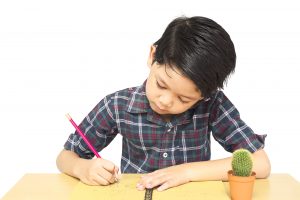
In Singapore, our answer schemes allocate method marks to give leeway for students who use the “correct” method but miss the answer due to calculation errors or careless mistakes.
While this is a great initiative to reward students for their understanding of the concepts, it also means that students have to intentionally frame their workings in a detailed and fixed manner, even if they may have other quicker methods to solve the same problem.
Many parents in Singapore send their children to enrichment classes like abacus and ballet so that they can learn different types of creative techniques.
For example, students who attend abacus classes would use mental abacus methods or even their own creative logic which can allow them to skip certain steps and get to the answer quickly.
Although using the fastest way to solve problems is of high demand in the real world, students have to go by the book and show the working that markers would expect in our classroom and exam setting.
Efforts to give students more freedom and space for creativity

Flexible marking scheme
The Singapore Examinations and Assessment Board (SEAB) has acknowledged that students may adopt different methods to solve problems in their exam papers and hence “any presentation of work that demonstrates a correct understanding by the student will be accepted”.
Since language is also very fluid, there is usually no one fixed answer. Multiple synonyms (different words that convey the same meaning) are accepted as long as the student shows that they have understood the intended connotations.
Differentiated instruction

The importance of differentiated instruction in education is growing increasingly prominent as we begin to acknowledge the unique differences in every student that give them a sense of individualism in our society.
Our regard for students’ creativity can be seen in many circumstances such as giving students the freedom to choose an essay question that they’re more confident in or knowledgeable about.
This allows students to leverage their passion in certain topics or concepts and produce work that would reflect confidence and pride.
Creative subjects offered as examinable subjects
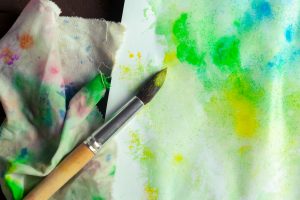
Our country also offers creative subjects such as Art, Music, and Design and Technology (D&T) for the national exams, though they are still widely avoided by the majority of the student population because of how subjective the marking could be.
Aside from the mainstream schools that place the bulk of their focus on academics, Singapore’s first specialised pre-tertiary arts school, School of the Arts (SOTA), was opened in 2008 where they integrate both arts and academics so that students receive their required education while still working on their creative passions.
What else can Singapore do?

Have more practical components
Currently, we have examinable practical components in science exams for students to build on their practical skills and learn through vital trial-and-error and experience.
But because these practical components take up only a small percentage of their grade, they are often overlooked by schools, students, and even tutors. Practical lessons are usually held only once a week in school which makes their practical learning very minimal and rushed.
Besides, students would also find practical components stressful because it’s way more difficult to catch up on practical learning in large classroom sizes as compared to theory learning.
Close guidance is essential for practical learning as they might struggle to follow the right procedure and attain the result that they need.
As a result, students still prioritise learning theory as it is the ‘safer’ option that also holds a bigger weightage.
Schools should reduce the stress and dread towards practical components by allocating more frequent practical lessons (e.g. going to the lab) throughout the week and raising the weightage of practical components.
This way, students have more time to work on their practicals and will place more importance on practical learning.
These will give a more equal balance in the importance of both practical and theory learning, so that students have the opportunity to leverage their creativity through experiments.
Emphasis on feedback rather than grades

Giving cold, hard numbers to measure a student’s understanding of a subject can be the reason why students are only obsessed with just chasing for the ‘perfect’ answers that examiners are looking for, and not being able to flourish with their creativity.
Instead of chasing for marks, what’s important should be the learning process so that students can become independent learners and utilise their own creativity. Proper encouragement from schools can lead students to discover new methods and solutions on their own, which might surprise you.
Schools should focus on giving constructive feedback to students on their level of understanding and how they can improve from thereon. This is so that students are not just labelled and constricted by marks, which would take away the joy of truly wanting to learn more.
Often, students might be on the right track and just need a little push in their critical thinking process to reach a creative solution.
Enrichment outside of schools
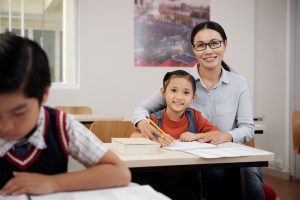
Tuition is extremely common among students in Singapore, where students are trying to get that extra help and boost to do better in their academics.
What tutors do to help these students can also make a big difference in nurturing their creativity.
Since schools have limits to the amount of attention they can give to each student due to the class size, tuition classes can provide students with the opportunity to expand on their learning beyond what they can do in school.
Tuition should be supplementary to school and would not be as impactful if it is just echoing the school system.
With the smaller class size and extra time, tutors have the ability to give more individualised attention to the students and guide them in their learning.
Conclusion

Though Singapore’s strict and rigid expectations are said to be the thief of creativity among our students, there are ongoing improvements and efforts to rectify our system; to be more flexible and accepting of students’ individualism, albeit more can still be done to truly hone our students’ creativity.
Like our articles? Read more here.
